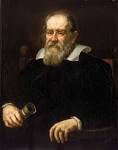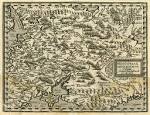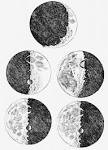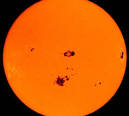| Date | Text | |
|---|---|---|
15 Feb 1564

Galileo Galilei |
birth Galileo Galilei Galileo Galilei, Pisan astronomer (died 1642). |
|
30 Nov 1585

Galileo |
Galileo (physics) Galileo publishes La Billancetta, describing an accurate balance to weigh objects in air or water. |
|
30 Nov 1587

Giovanni Antonio Magini |
Giovanni Antonio Magini (mathematics) Giovanni Antonio Magini is chosen over Galileo to occupy the chair of mathematics at the University of Bologna after the death of Egnatio Danti. |
|
30 Nov 1609

Galileo's moon drawing |
Galileo's moon drawing In 1609, the modern face of the moon first emerged when Galileo Galilei in Padua turned his telescope toward the moon, noted the irregularities of the crescent face, and made a drawing to record his discoveries. He made at least five more drawings of the moon over the next eighteen days, prepared careful watercolor sketches from these drawings, and then selected four of these to be engraved for his revolutionary Starry Messenger, which appeared the following March. Galileo's treatise announced to an astonished public that the moon was a cratered chunk of elements - a world - and not some globe of quintessential perfection. It was a new land, to be explored, charted, and named. |
|
27 Feb 1611

Sunspots |
Sunspots (astronomy) Sunspots are observed by telescope by Frisian astronomers Johannes Fabricius and David Fabricius and Johannes publishes the results of these observations in De Maculis in Sole observatis in Wittenberg later this year. Such early discoveries are overlooked however, and the first sighting is claimed a few months later by Galileo Galilei and Christoph Scheiner. |
|
12 Apr 1633

Galileo trial |
Galileo trial In 1633, Galileo Galilei's second trial before the Inquisition began. At its conclusion, his belief that the Earth was not the centre of the Universe was pronounced heretical. |
|
13 Apr 1728

Paolo Frisi |
birth Paolo Frisi Born 13 Apr 1728; died 22 Nov 1784 at age 56. Italian mathematician, astronomer, and physicist who is best known for his work in hydraulics (he designed a canal between Milan and Pavia). He was, however, the first to introduce the lightning conductor into Italy. His most significant contributions to science, however, were in the compilation, interpretation, and dissemination of the work of other scientists, such as Galileo Galilei and Sir Isaac Newton. His work on astronomy was based on Newton's theory of gravitation, studying the motion of the earth (De moto diurno terrae). He also studied the physical causes for the shape and the size of the earth using the theory of gravity (Disquisitio mathematica, 1751) and tackled the difficult problem of the motion of the moon. |
|
31 Oct 1992

Pope John Paul II |
Pope John Paul II (astronomy) Pope John Paul II issues an apology and lifts the edict of the Inquisition against Galileo Galilei. |